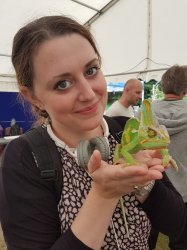
Who’s likely to have a fabella or two - and why?

The once-rare ‘fabella’ bone has made a dramatic resurgence in human knees, but who’s likely to have a fabella or two - and why?
Fabellae aren't formed by knee-jerk reactions to either genetics or environment alone. Dr Michael Berthaume Department of Bioengineering
Led by Dr Michael Berthaume at Imperial College London, a new meta-analysis has found that the mystery knee bone is more common in older people, more often found in men than women, and in people in Asia.
This is the first time fabella prevalence has been studied in such detail by region, age, and sex - and is the first to examine how these factors implicate genetic and environmental factors in fabella development.
Bare bones
From 1918 to 2018, the number of human knees donning seemingly useless fabellae – small bones buried in the tendon behind some knees – trebled.
Latin for “little bean”, it's linked to knee pain, arthritis, and problematic knee surgeries.
Now, the Imperial team who brought the fabella’s comeback to light has uncovered why fabellae form in some people and not others, as well as its links to geographical region, age, and sex.
The researchers, based at Imperial’s Department of Bioengineering, had already found better nutrition worldwide to be a driving factor in the fabella’s resurgence, but had bones to pick about the role of genetic and other environmental influences.
Bones of contention
For this new study, published in Journal of Anatomy, the researchers used the same dataset as the earlier research, which included 66 research papers spanning 27 countries and 21,676 individual knees.
region
Knees studied in Asia were most likely to have fabellae, followed by those from Oceania, South America, Europe, the Middle East, North America, with knees in Africa the least likely.
Up to half the knees studied in Asia had a fabella, while up to one in five knees studied in Africa had one.
Dr Berthaume said: “Our findings highlight how regionally-linked, genetic variation plays an important role in fabella formation. However, regional factors unrelated to genetics may also play significant roles.”
Age
Fabellae appeared more frequently in older people, suggesting fabella development increases with age. This, the authors say, could be because older people are more likely to have experienced the mechanical stimuli necessary for fabellae ossification.
Many bones, like our sternums, or vertebrae in our spines, ossify at predictable ages – for example, we expect the shoulder blades to be fully formed by age 20.
The fabella, according to the research, can ossify at any age.
Dr Berthaume said: “Fabellae are unique among bones in that they can appear at any age. They’re more common in older individuals because they can appear as individuals grow.”
Sex
Men were slightly more likely than women to have fabellae. The authors say the reason could lie in the difference in average muscle strength and shinbone length between the sexes.
Dr Berthaume said: “The fabella is a sesamoid bone – a tendon-bound bone that grows in response to mechanical forces like friction, tension, pressure, and stress. Larger muscles and longer shin bone in males produce more mechanical force, which explains why men are more likely than women to develop fabellae.”
Two’s company
Just over one in three knees worldwide have a fabella, and seven in ten people with a fabella in one knee have a fabella in their other knee.
The authors say this symmetry supports the role of genetics in fabella ossification.
People with only one fabella were just as likely to have one in the right knee as in the left. This lack of preference for either knee supports the role of environmental factors in fabella development.
Bones to pick
The team says the findings provide yet more insight into the genetic and environmental influences on human evolution over the past 150 years – and that fabella formation is probably due to a combination of both.
Dr Berthaume said: “Fabellae are formed through complex interactions between nature and nurture. They’re not a result of knee-jerk reactions to either genetics or environment alone.
“Each factor studied here points to different drivers: Differences in fabella rates by sex and age suggest they’re products of mechanical stress, whereas the likelihood of fabella appearance in both knees, along with differences in assumed ethnicity, suggest a more genetic driver.”
Dr Berthaume, who now works at London South Bank University, said: “Your ethnicity, age, and sex all play a role in whether you develop a fabella. These new findings add to our previous hunch that better worldwide nutrition probably drove the fabella’s resurgence, but that genetics and other factors, which we have yet to address, also play their part.”
The researchers say more studies are needed to pinpoint the exact genetic and environmental combinations that drive fabella formation. Next, they will look at the links between activity level and fabella development.
This work was funded by the National Institute for Health Research (NIHR)
“Human biological variation in sesamoid bone prevalence: the curious case of the fabella” by Michael A. Berthaume and Anthony M. J. Bull, published 18 October 2019 in Journal of Anatomy.
Supporters

Article text (excluding photos or graphics) © Imperial College London.
Photos and graphics subject to third party copyright used with permission or © Imperial College London.
Reporter

Caroline Brogan
Communications Division

Contact details
Tel: +44 (0)20 7594 3415
Email: caroline.brogan@imperial.ac.uk
Show all stories by this author
Leave a comment
Your comment may be published, displaying your name as you provide it, unless you request otherwise. Your contact details will never be published.




Comments
Comments are loading...